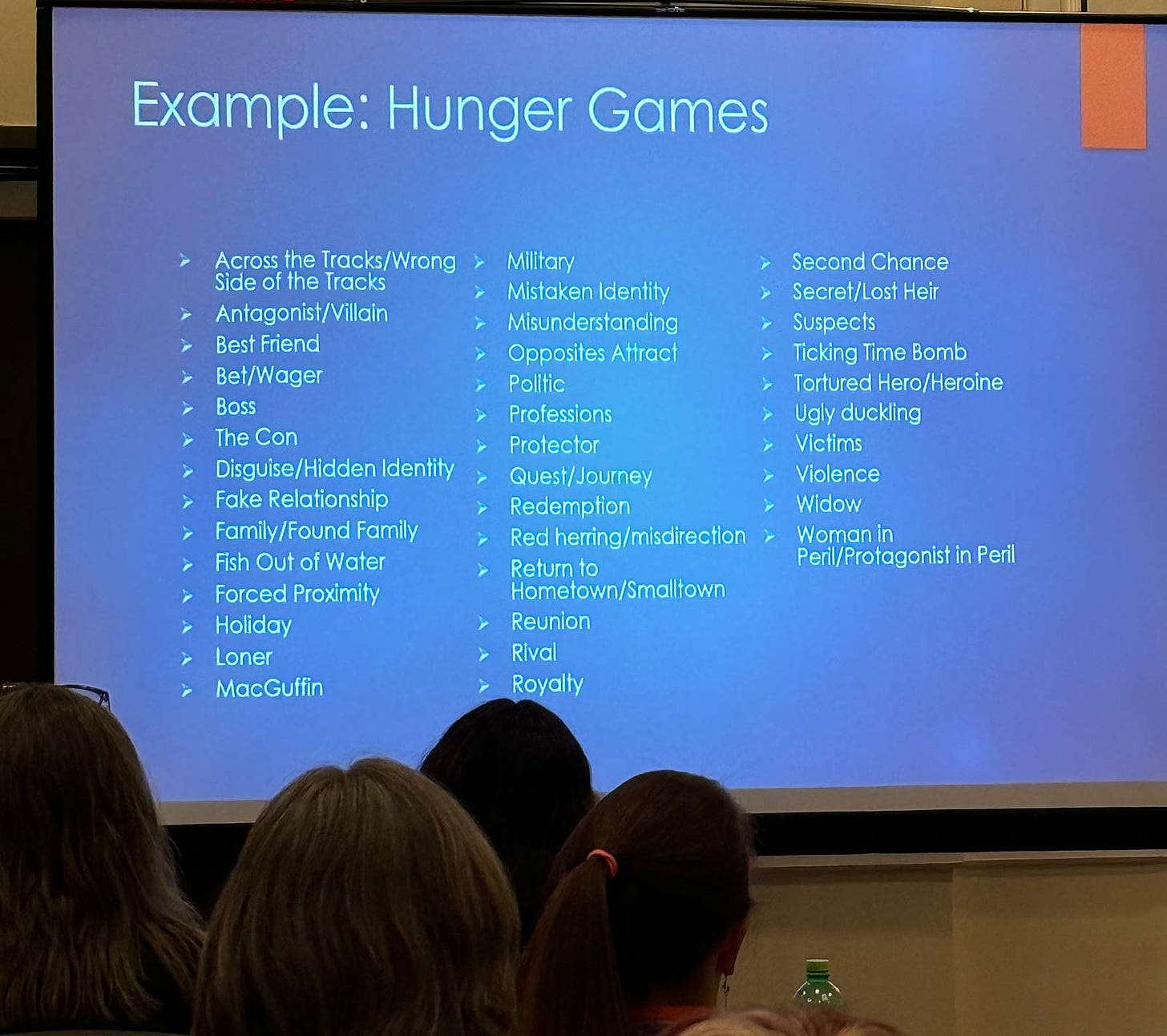The answer may surprise you. Here’s a peek behind the curtain of tropes and genre conventions.

Why do some stories resonate with readers while others fall flat? Could be a lot of things. Scintillating plot. Great characters. Stellar writing and storytelling.
But often, the reason comes down to an unexpected source: tropes.
A trope is a recurring and commonly used theme, plot structure, convention, character type, or literary device that recurs across similar works — say, a cowboy romance or alien invasion or slasher flick. There’s an entire website devoted to TV tropes.
Like many writers, I started my author journey with a mistaken idea about tropes. Ha! I thought. They can’t put my works of staggering genius into a box! Screw your boring conventions and predictable genres, I don’t write in cliches!
Look for what works … for your readers

It didn’t take long to get a cold dose of reality of what works and doesn’t work in the book publishing world. Because the fact is that most readers, movie lovers, and TV watchers come to a novel, film, or show with certain expectations, even if we can’t quite articulate what they are.
For authors, choosing to use tropes and frameworks to organize the events of your narrative does not mean that your novel lacks surprises or has a formulaic pattern. It’s up to you as the writer to find how to inject freshness into these well-established structures. Author Rachael Herron summed this up nicely: “The reader expects you to provide her with the unexpected in a framework of the inevitable.”
At last week’s Author Nation conference in Las Vegas, author Jennifer Hilt — who writes the TropeTalk Substack — put it even more simply: “A trope is a promise to the reader.”
A promise. I like that. You’re signaling to the reader what kind of experience they’ll have if they turn your pages. A trope is a hook. A storybuilding block that changes from one subgenre to the next. An element of a story that conveys a familiar universality.
Break the rules and suffer the consequences
It’s important for the author and for readers to agree on the terms of this engagement. If you’re writing a romance where the story doesn’t end happily for the protagonists, “call it a love story,” Hilt said, “but don’t call it a romance because it’s not.” And you’ll get pilloried by unhappy readers for breaking that promise you’ve signaled.
All stories that hit the silver screen contain tropes, and once you’ve watched enough of them, you’ll come to understand the kinds of plot twists that introduce an unlikely hero, a major obstacle or setback to overcome, a sidekick character, a narrative arc like rags to riches, and so on. The best stories use certain tropes, perhaps defy others, but always inject something fresh and engaging in the storyline.

Hilt pointed to Suzanne Collins’ The Hunger Games as a classic hit that was rife with tropes — she listed a few dozen in the slide shown at the top of this page.
In the end, it’s a bit of a tricky balance. You don’t want to use so many tropes as to risk your novel reading as cliché, but you also don’t want to fail to use any tropes at all and potentially deny readers the kind of experience that drives them toward a genre read in the first place.
Birth of a new trope
Hilt pointed out a new phenomenon I wasn’t aware of: horror women’s fiction.
Say what?
It’s the latest trend — a mashup of women’s fiction with some monsters thrown in. It combines a story about a woman’s journey or motherhood with horror elements and loss of hope.
It’s coming to the screen in December in the Amy Adams starrer Nightbitch, based on the best-selling novel by Rachel Yoder. (Check out the trailer, it takes a wild turn.) And it’s exemplified in Sundial, the twisty psychological horror novel by Catriona Ward, internationally bestselling author of The Last House on Needless Street.
Women and monsters. Sounds like a commentary on our times.






